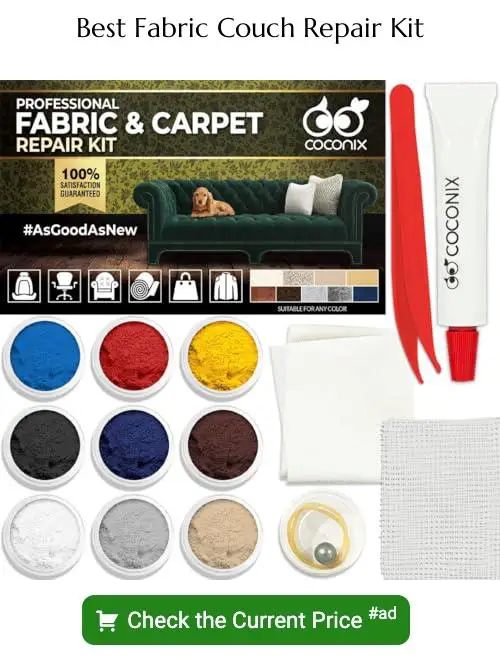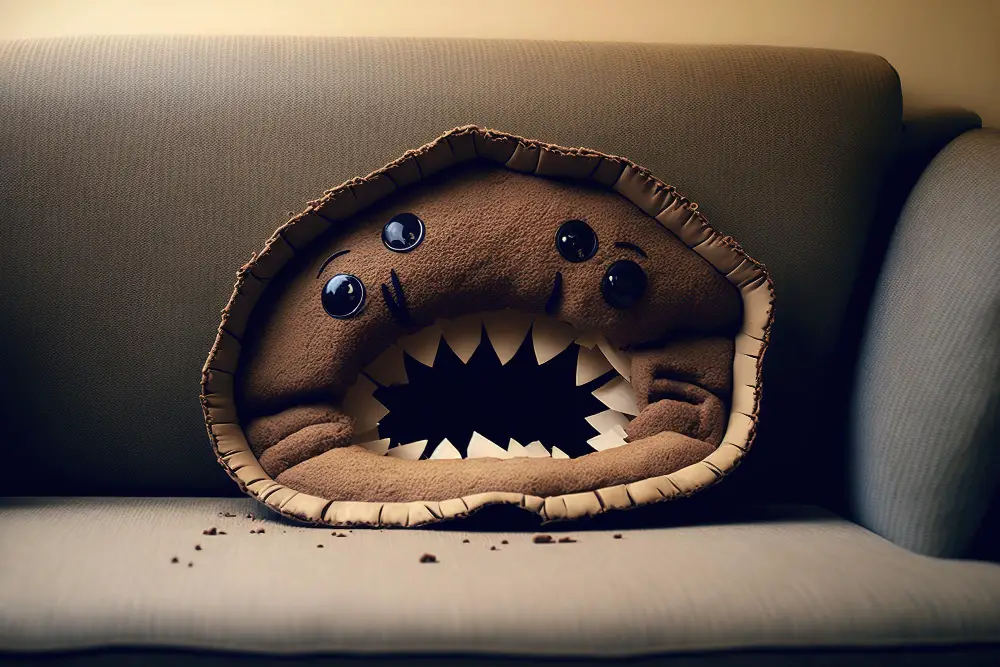Last updated on
Discover the effective ways to repair and prevent unsightly cat scratches on your fabric couch, keeping it looking fresh and inviting.
Your beloved feline friend may be a source of joy and comfort, but their claws can wreak havoc on your furniture. If you have found yourself staring at unsightly scratches on your fabric couch, don’t fret! There are actually several ways to fix cat scratches on fabric couches without having to replace the entire piece of furniture.
In this article, we will explore some simple and effective methods for repairing those pesky scratches so that you can enjoy your cozy couch once again. So grab a cup of tea and let’s dive in!
Table of Contents
Assessing the Damage
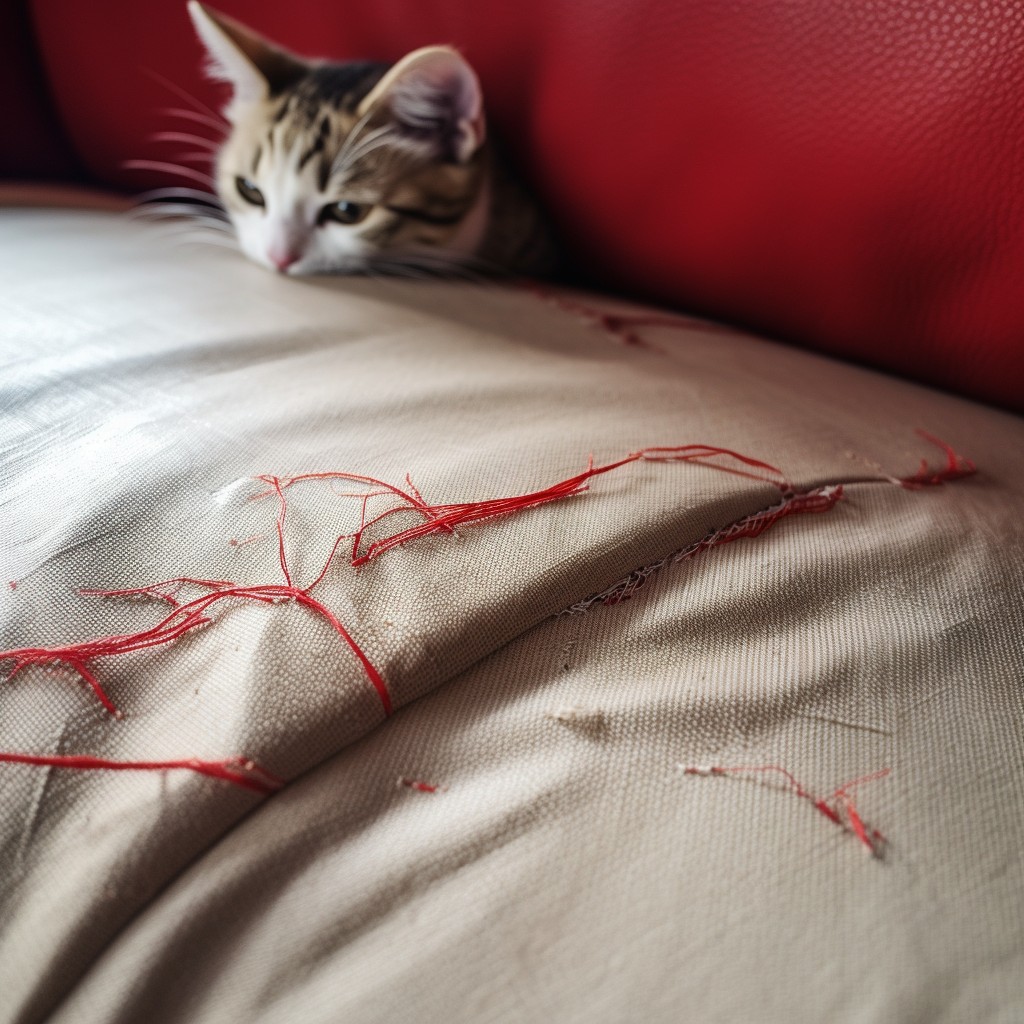
The first step in repairing cat scratches on your fabric couch is to assess the damage. This will help you determine the extent of the problem and what repair techniques are needed.
Take a close look at each scratch, noting its size, depth, and location on the couch. If there are multiple scratches or areas of damage, make a list so that you can address them one by one.
Assessing the damage also involves identifying any loose threads or fibers around each scratch. These should be trimmed carefully with scissors to prevent further unraveling before proceeding with repairs.
Choosing Repair Tools
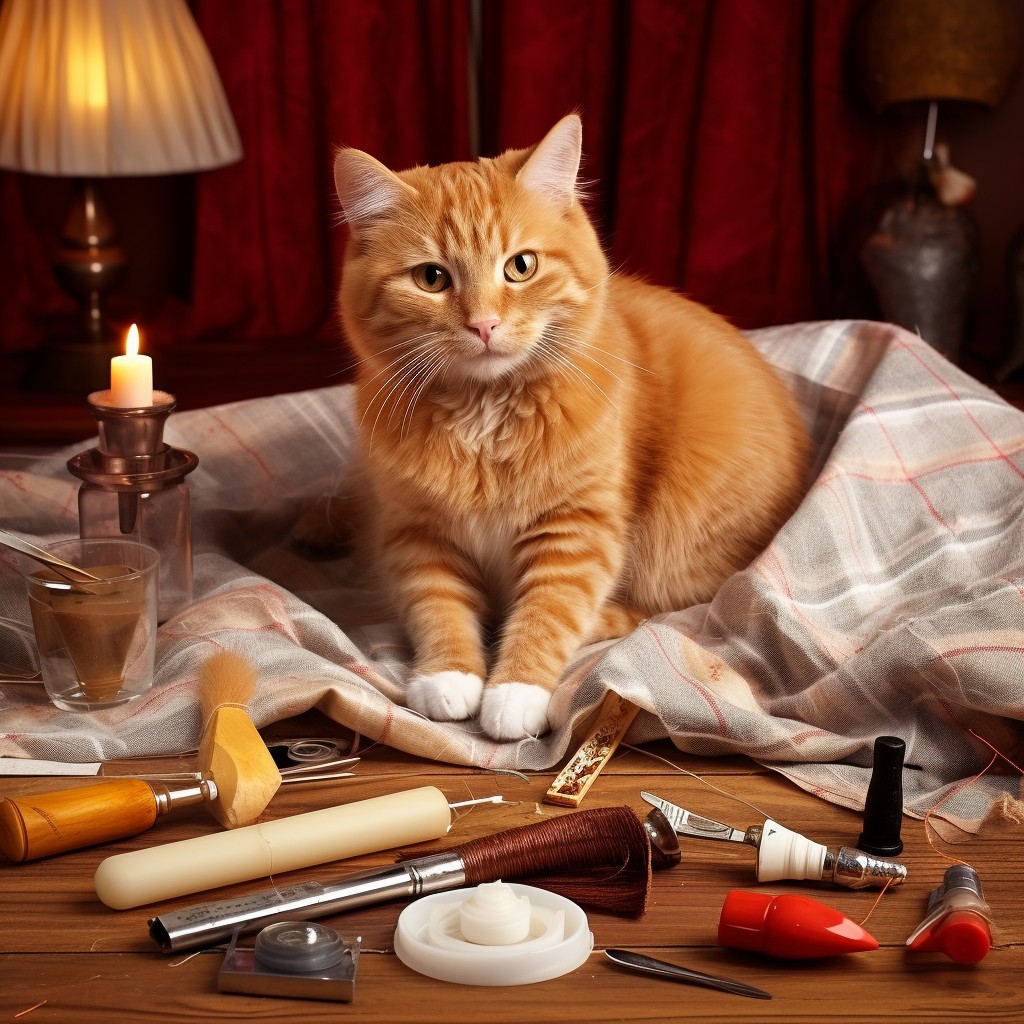
The good news is that most of these tools can be found at your local hardware store or online. Here are some essential repair tools you will need:
1. Scissors: You’ll need a sharp pair of scissors for trimming loose threads and cutting patches.
2. Tweezers: Use tweezers to pull out any loose fibers from the affected area.
3. Sandpaper: For larger scratches, use sandpaper to smooth out rough edges before applying any patching material.
4. Fabric glue: This adhesive is perfect for fixing small tears and holes in fabric upholstery.
- Heat patch kit: A heat-activated patch kit can be used on larger areas where there are multiple scratches or holes in close proximity.
- Needle and thread set: Needle and thread sets come handy when dealing with small rips or tears on your couch
Materials and Tools Needed
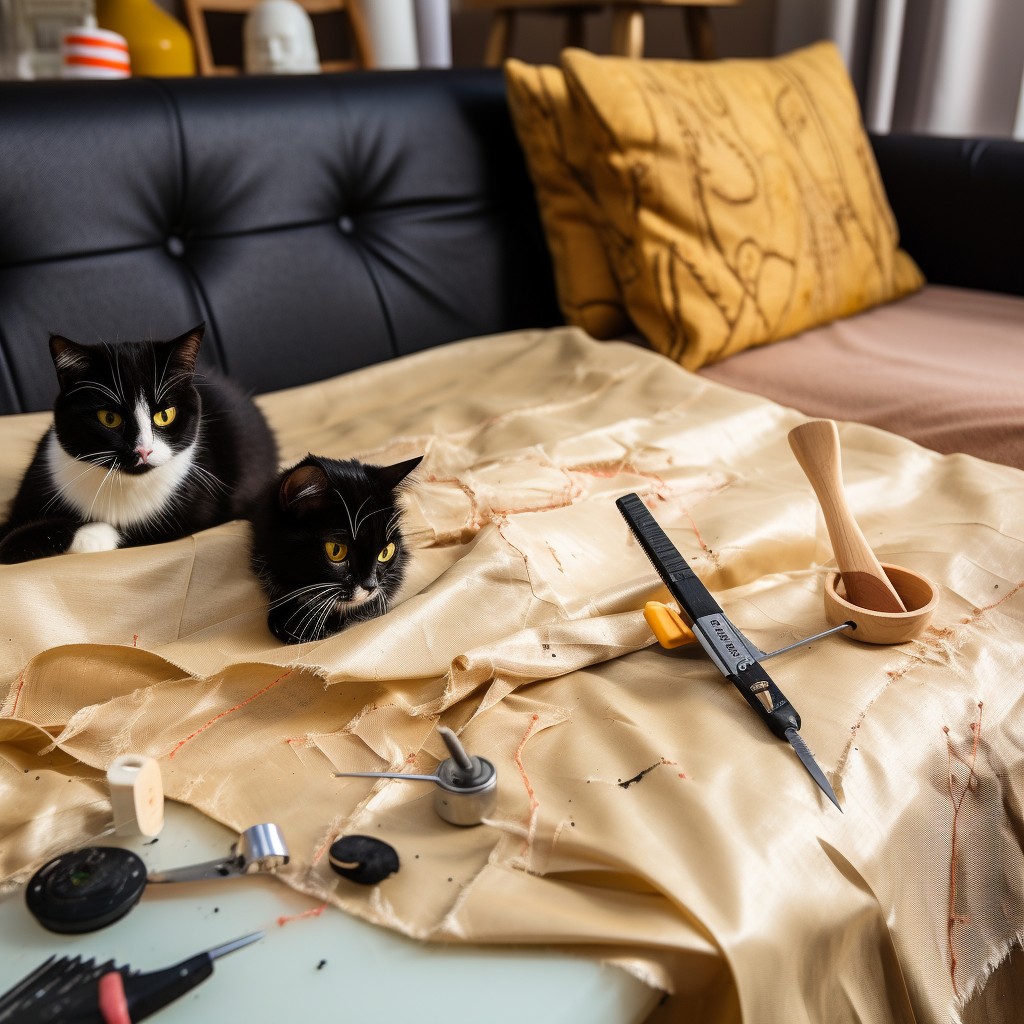
The good news is that you don’t need anything too fancy or expensive! Here are some of the basic items you’ll want to have on hand:
- Sandpaper (fine grit)
- Scissors
- Tweezers
- Needle and thread (matching color)
- Fabric glue
- Heat patch kit
- Upholstery tacks
- Extra fabric scraps
Having these supplies readily available will make it easier for you to tackle any scratches as soon as they happen. It’s also a good idea to keep them in a designated spot so that they’re easy to find when needed.
Vacuum and Clean Affected Area
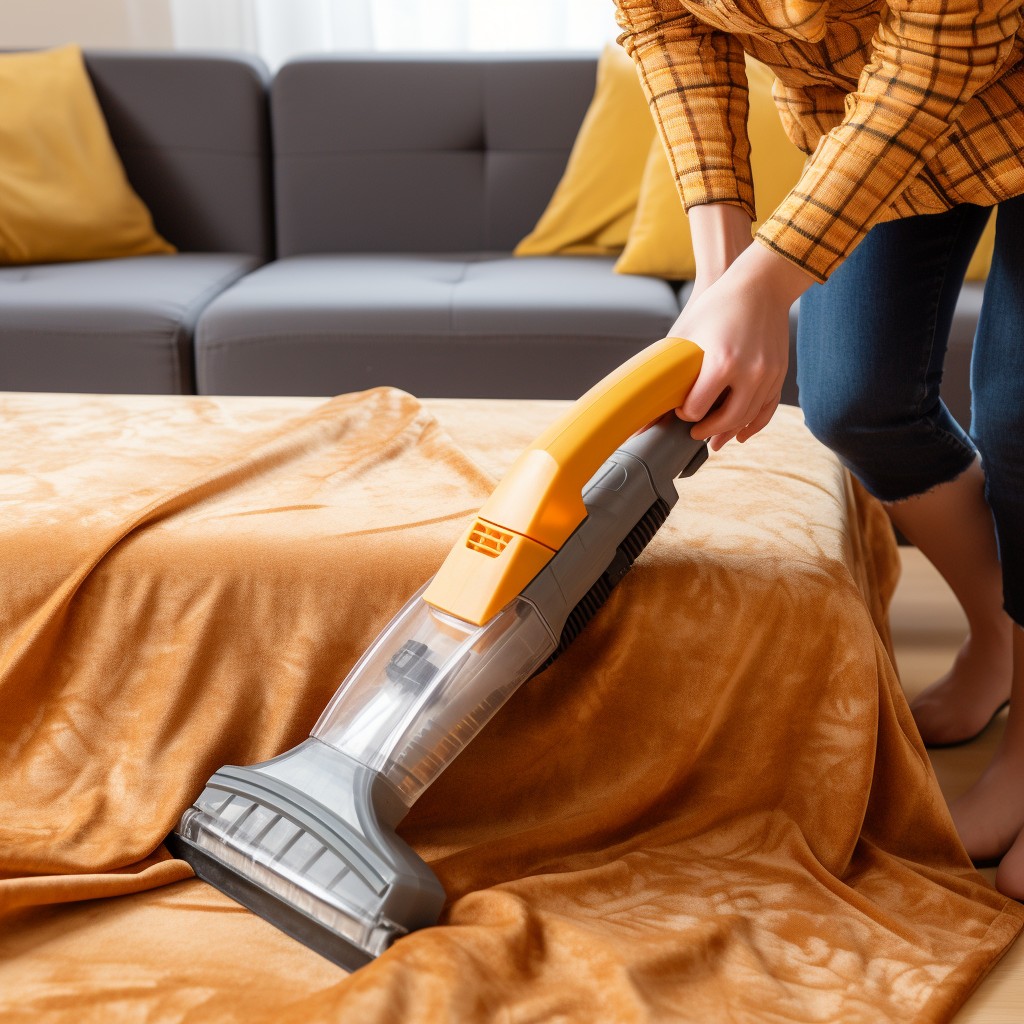
This will help remove any dirt or debris that may have accumulated in the scratch and ensure that your repair efforts are successful.
Start by vacuuming the scratched area with a soft brush attachment. Be sure to use gentle strokes so as not to further damage the fabric.
Once you’ve removed any loose debris, use a damp cloth or sponge to gently wipe down the surface of your couch.
Avoid using harsh chemicals or abrasive cleaners as these can cause further damage and discoloration of your upholstery. Instead, opt for mild soap and water solutions or specialized upholstery cleaning products designed specifically for delicate fabrics.
Fabric Couch Repair Techniques
There are several methods you can use depending on the severity of the scratches and tears. For small scratches, using a needle and thread may be enough to fix them up.
You can also trim any excess threads or fibers with scissors.
For larger scratches or holes in your fabric couch, there are other techniques you can try such as using heat patches or applying fabric glue to hold everything together. If upholstery tacks have come loose from their position due to cat scratching, they need repairing too.
It is important not only to fix these damages but also restore color and blend repaired areas with surrounding fabrics so that they don’t stand out like sore thumbs.
Fixing Loose Threads
Loose threads can be caused by a variety of factors, including pet scratches and general wear and tear. Fortunately, fixing loose threads is a relatively simple process that can help extend the life of your furniture.
To fix loose threads on your fabric couch, start by trimming any excess thread with scissors or a sharp blade. Be careful not to cut too close to the surface of the fabric as this could cause further damage.
Next, use a needle and thread in matching color to sew up any remaining frayed edges. Start at one end of the thread and work towards the other end until all frayed edges are secured in place.
Repairing Small Scratches
If you have small scratches, repairing them can be a simple process that doesn’t require much effort or time. Small scratches are typically shallow and don’t penetrate deep into the fabric fibers.
To fix small cat scratches on your fabric couch, start by cleaning the affected area with a vacuum cleaner or lint roller to remove any loose threads or debris. Then use fine-grit sandpaper to gently buff out any rough edges around the scratch.
Next, apply some liquid leather or vinyl repair solution onto a clean cloth and rub it over the scratched area in circular motions until it’s evenly distributed. Allow it to dry completely according to manufacturer instructions before applying another coat if necessary.
If you don’t have access to liquid leather/vinyl repair solution, try using clear nail polish instead as an alternative method for fixing minor cat scratches on your furniture upholstery.
Repairing Large Scratches
There are still ways to repair the damage and restore it to its former glory. For larger scratches, you may need to use a patch or filler material.
To begin repairing large scratches, first clean the affected area with a vacuum cleaner or lint roller. Then assess the size of the scratch and determine if it requires a patch or filler material.
For small holes or tears in upholstery fabric, you can use an iron-on patch that matches your couch’s color and texture. Simply cut out a piece of matching fabric slightly larger than the hole and place it over the damaged area before applying heat with an iron.
For deeper gouges in leather furniture, fillers like putty can be used as they bond well with leather surfaces when applied correctly. When using any type of filling agent for repairs on fabrics such as microfiber sofas ensure that they match closely enough so that there is no visible difference between them after application.
Using Fabric Glue
This method is particularly useful for repairing loose threads and small holes in the upholstery. To use this technique, start by cleaning the affected area thoroughly to remove any dirt or debris that may interfere with the adhesive.
Next, apply a small amount of fabric glue to the damaged area and press it firmly into place. Be sure not to use too much glue as it can seep through the fibers of your couch’s upholstery and create unsightly stains.
Allow ample time for drying before testing out its strength by gently tugging at repaired areas.
Applying Heat Patches
Heat-activated adhesive patches are available at most craft stores and online retailers. These patches come in various sizes and colors, making it easy to find one that matches your couch’s fabric.
To apply a heat patch, start by cleaning the affected area with a vacuum cleaner or lint roller. Then cut the patch to size so that it covers the entire damaged area with some overlap around its edges.
Next, place the patch over the damaged area of your couch’s fabric and use an iron on low heat setting (without steam) for about 30 seconds per section until all parts of it adhere properly onto both sides of torn fabrics.
Needle and Thread Fix
This method is best for repairing larger tears or holes in the fabric. To begin, gather a needle and thread that matches the color of your couch’s upholstery.
Firstly, start by threading your needle with enough thread to complete the repair without having to re-thread it halfway through. Next, carefully stitch up any large tears or holes in the fabric using small stitches that match those already present on your furniture.
Be sure not to pull too tightly as this can cause puckering around where you have sewn. Once finished stitching up all areas needing repair trim off any excess threads with scissors so they don’t get caught on anything else while sitting down!
Trim Excess Threads
These can be unsightly and make your repair job look less professional. To fix this issue, use a pair of sharp scissors to carefully trim any loose or excess threads around the repaired area.
Be sure to hold onto any long strands of thread as you cut them so that they don’t get caught in other areas of the fabric. Once all loose threads have been trimmed away, take a step back and admire your handiwork! Your couch should now look good as new without any visible signs of damage or repair.
Remember that trimming excess threads is just one small step in restoring your fabric couch after cat scratches. Be sure to follow all necessary steps for proper cleaning and repair techniques before moving on to this final touch-up stage.
Repairing Upholstery Tacks
First, remove any loose or damaged tacks using pliers. Then, replace the tack with a new one of the same size and shape.
To ensure it stays in place, use a small amount of fabric glue to secure it before tapping it gently into place with a hammer.
It is important to note that if you are not confident in repairing upholstery tacks yourself or if there are too many damaged ones on your couch for you to handle alone, seeking professional help may be necessary. A furniture repair specialist will have the expertise and tools needed to fix any damage caused by cat scratches on your beloved fabric couch.
Remember: prevention is always better than cure when dealing with pet-related damages on furniture pieces such as sofas and chairs.
Fibers and Filling Fixes
One common issue is when fibers or stuffing become loose or start to come out of the scratches. To fix this problem, you will need a few basic materials such as scissors, needle and thread, and extra filling.
Firstly, use scissors to trim any excess fibers that are sticking out from the scratch. Then take a small amount of extra filling material (you can purchase this at most craft stores) and gently stuff it back into place using a toothpick or similar tool.
Next up is sewing up any holes in your couch’s upholstery caused by scratching with needle-and-thread fixes. Thread an appropriate color thread onto a large-eyed needle then carefully stitch along each side of the tear until it’s closed shut.
Patching Holes
Here’s how to do it:
1. First, assess the size of the hole and determine if it can be repaired with a simple patch or if more extensive work is needed.
2. If the hole is small, cut a piece of fabric that matches your couch as closely as possible and place it over the damaged area.
3. Use fabric glue to attach the patch to both sides of the torn area.
4. For larger holes or tears, use an iron-on adhesive tape instead of glue for added strength and durability.
5. Apply heat using an iron on low heat setting until adhesive melts into place.
6. Trim any excess threads from around patched areas so they blend seamlessly with surrounding material.
Restoring Fabric Color
This is because over time, sunlight and wear can cause fading or discoloration in fabrics. Fortunately, there are ways to restore color to your couch and make it look like new again.
One option is to use a fabric dye specifically designed for furniture upholstery. These dyes come in a variety of colors and can be applied with a sponge or brush directly onto the affected area.
Be sure to follow all instructions carefully when using these products.
Another option is to hire a professional upholsterer who specializes in color restoration services. They will have access to specialized equipment and techniques that can help bring back vibrancy and depth of color without damaging your furniture further.
Blending Repaired Area
This is because new materials and colors used in repairs can stand out against older, faded fabrics. To blend these areas together seamlessly, there are a few tricks you can try.
One option is to use a fabric marker or dye to match the color of your repaired area with that of your original upholstery. You can also use an airbrush tool for more precise blending.
Another technique involves using steam to help blend fibers together and create a smoother appearance. Simply hold a steam iron over both sides of the repair until it blends in with surrounding areas.
Prevention Strategies
While it may not be possible to completely eliminate the risk of scratches, there are some strategies you can implement to minimize them.
One effective strategy is training your cat’s behavior. You can do this by providing scratching alternatives such as a scratching post or pad that will satisfy their natural urge to scratch without damaging your furniture.
You can use deterrents like double-sided tape or aluminum foil on areas where they tend to scratch.
Another prevention strategy is covering the couch with a protective cover when not in use or when you’re away from home for an extended period of time. This will help keep your furniture safe from any potential damage caused by curious cats.
Training Cat Behavior
Cats have a natural instinct to scratch, so it’s important to provide them with appropriate alternatives. One option is investing in a scratching post or pad that will satisfy their urge without damaging your couch.
Place the post near the couch and encourage your cat to use it by rubbing some catnip on it or playing with toys around it.
Another strategy is using deterrents such as double-sided tape, aluminum foil, or citrus spray on areas where you don’t want your cat scratching. These materials are unpleasant for cats and can discourage them from returning.
It’s also essential not to punish cats for inappropriate behavior but instead reward good behavior when they use their designated area for scratching.
Providing Scratching Alternatives
Instead of trying to stop your feline friend from scratching altogether, provide them with alternative surfaces that are more appropriate for their needs. This will not only save your furniture but also keep your cat happy and healthy.
One option is to invest in a sturdy scratching post or pad made specifically for cats. These can be found at most pet stores and come in various sizes and materials such as sisal rope or cardboard.
Another option is providing horizontal scratchers like corrugated cardboard pads which can be placed on the floor or mounted on walls at different heights so that they mimic tree bark texture where cats love to scratch naturally.
It’s also essential to place these alternatives near areas where your cat likes to lounge around, eat, sleep or play so they have easy access when the urge strikes them. By providing these alternatives along with regular nail trimming sessions (or using soft caps), you’ll help redirect their energy towards appropriate outlets while keeping both kitty and couch safe from harm!
FAQ
Can you fix cat scratches on upholstery?
Yes, fixing cat scratches on upholstery is possible by patching or mending isolated rips and tears, or by re-upholstering or covering larger damaged sections with a throw or slipcover.
How do you cover cat damage on a couch?
To cover cat damage on a couch, use cat protector pads available at hardware or pet stores and place them on the sides or arms of the sofa.
Do cats ruin fabric sofas?
Yes, cats can ruin fabric sofas by scratching, which can lead to snags, rips, and holes, but addressing the issue early and considering reupholstering can help mitigate the damage.
Can you get scratches out of fabric?
Yes, you can remove scratches from fabric by gently scrubbing the mark with a soft cloth or sponge dipped in a mild dish soap and warm water solution, and then wiping it dry with a clean cloth.
What are the best materials for a cat-proof couch?
The best materials for a cat-proof couch include microfiber, canvas, denim, outdoor fabrics, and synthetic fiber blends.
How can protective measures be implemented to minimize cat scratches on a fabric sofa?
To minimize cat scratches on a fabric sofa, implement protective measures such as using a sofa cover, providing alternative scratching surfaces, and applying double-sided tape on vulnerable areas.
Are there any specific upholstery repair techniques tailored for mending cat scratch damages?
Yes, specific upholstery repair techniques for mending cat scratch damages include using fabric glue, replacing damaged fabric, and using a reweaving or patching method.
You may also like to read:
